GRACIELA ITURBIDE EXHIBITS IN FONDATION CARTIER
From February 12 to May 29, 2022, the Fondation Cartier pour l’art contemporain presents Heliotropo 37, the first large exhibition devoted to Mexican photographer Graciela Iturbide in France, spanning works dating from the 1970s to the present day.
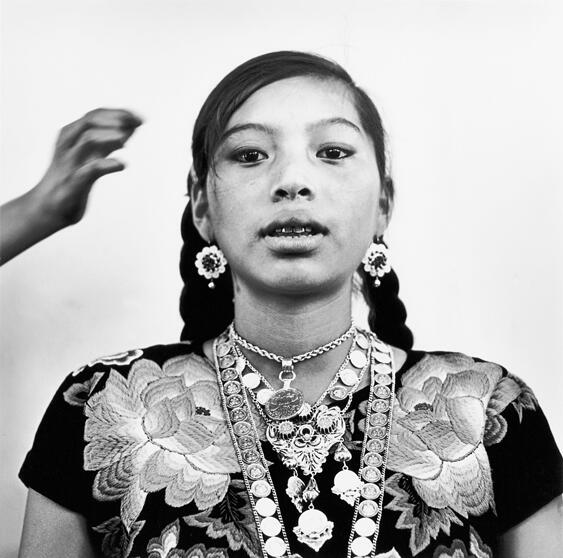
For the occasion, she opens the doors of her studio at 37 Calle Heliotropo in Mexico, an architectural masterpiece by Mauricio Rocha, who has also been entrusted with the exhibition scenography. A veritable exhibition-portrait, Heliotropo 37 brings together over 200 images, from her most iconic photographs to her more recent production, as well as a color series created especially for the exhibition.
“Ultimately, I think photography is a ritual for me. To go off with my camera, observe, capture the most mythical part of man, then go into darkness, develop, choose the symbolism…”. Winner of the W. Eugene Smith Memorial Fund in 1987, then the Hasselblad Award in 2008—photography’s highest distinction—Graciela Iturbide is a major figure of Latin American photography. For over fifty years, she has created images that oscillate between a documentary approach and a poetic gaze, bringing a spiritual attention to landscapes and objects. This unique exhibition presents the two sides of Graciela Iturbide, thereby providing us with a fresh perspective on her work.
The exhibition presents a large number of photographs of people she met and objects that caught her attention over the course of her various journeys throughout Mexico, but also to Germany, Spain, Ecuador, Japan, the United States, India, Madagascar, Argentina, Peru, and Panama, between the 1970s and 1990s. Amongst the emblematic series from this period are Los que viven en la arena [Those who live in the sand, 1978] for which Graciela Iturbide spent a long time living with the Seri community in the Sonora Desert in the north-west of the country; Juchitán de las mujeres (1979-1989), devoted to Zapotec women and culture, in the Oaxaca Valley of south-eastern Mexico, and the White Fence Gang series (1986- 1989) focusing on cholos, gangs of Mexican origin in Los Angeles and Tijuana.
In addition to the photographs that made the artist famous, Heliotropo 37 reveals her recent photographic production, little presented up until now. Over the years, Graciela Iturbide’s images have become devoid of any human presence and her attention has turned to materials and textures, revealing the metaphysical link that unites the artist to objects, nature and animals. In 2021, at the initiative of the Fondation Cartier, Graciela Iturbide travelled to Tecali, a village close to Puebla in Mexico where alabaster and onyx are mined and cut. A rare occurrence in her career, she abandoned black and white in favor of color photography to capture the pink and white stones being polished. The alabaster blocks on which writings and engravings are occasionally visible, stand out against the crystalline sky, like totems.
REPLAY: GRACIELA ITURBIDE IN CONVERSATION AT BAphoto
The Fondation Cartier has made photography one of the major focuses of its programming. Graciela Iturbide’s Heliotropo 37 follows in the footsteps of previous exhibitions devoted to major Latin American photographers. Through solo exhibitions, the Fondation Cartier has showcased the work of Brazilian photographer Alair Gomes (2001) and Colombian Fernell Franco (2016) to a European public. In 2013, the America Latina 1960-2013 exhibition offered a new perspective on the great diversity of photographic practices in this part of the world, bringing together seventy-two artists from eleven different countries. More recently, in 2020, the Fondation Cartier presented in Paris and later Milan, the largest exhibition ever devoted to the photographic work and activism of the remarkable Brazilian artist Claudia Andujar.
Related Topics
May interest you
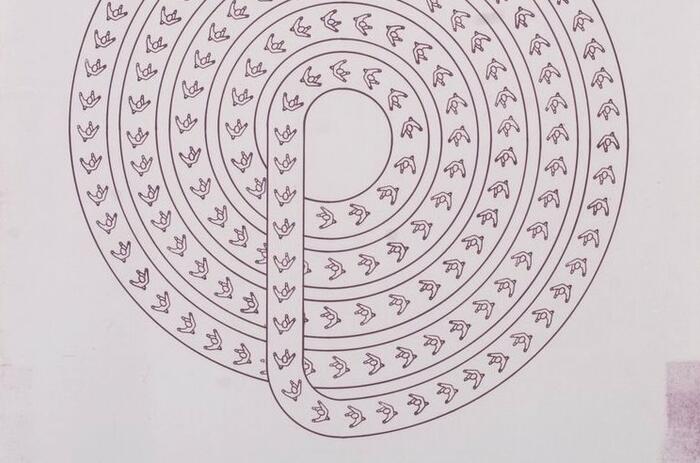
The MACA (Atchugarry Museum of Contemporary Art) hosts until mid-April the great exhibition entitled Gráfica Encapsulada (Encapsulated Graphics) by the Argentine artist León Ferrari. The show features a series of works dating back to the 1980s.
THE MACA IN MANANTIALES EXHIBITS LEÓN FERRARI: ENCAPSULATED GRAPHICS
The MACA (Atchugarry Museum of Contemporary Art) hosts until mid-April the great exhibition entitled Gráfica Encapsulada (Encapsulated Graphics) by the Argentine artist León Ferrari. The show features a series of works dating back to the 1980s.

The MACA (Atchugarry Museum of Contemporary Art) hosts until mid-April the great exhibition entitled Gráfica Encapsulada (Encapsulated Graphics) by the Argentine artist León Ferrari. The show features a series of works dating back to the 1980s.
THE MACA IN MANANTIALES EXHIBITS LEÓN FERRARI: ENCAPSULATED GRAPHICS
The MACA (Atchugarry Museum of Contemporary Art) hosts until mid-April the great exhibition entitled Gráfica Encapsulada (Encapsulated Graphics) by the Argentine artist León Ferrari. The show features a series of works dating back to the 1980s.
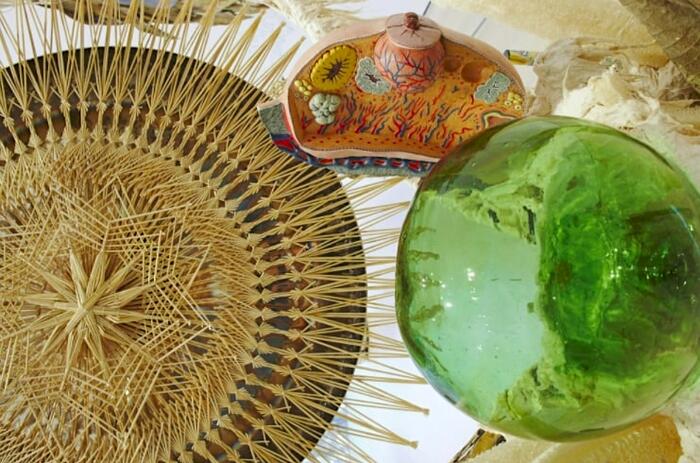
Guadalupe Maravilla: Luz y Fuerza exhibits sculptures and other pieces by the Salvadoran artist while also hosting Healing Sound Baths for the public. “I create new mythologies that take the form of real and fictionalized rituals based on my own lived experiences,” says Guadalupe Maravilla.
GUADALUPE MARAVILLA EXHIBITS IN MoMA AND OFFERS HEALING SESSIONS
Guadalupe Maravilla: Luz y Fuerza exhibits sculptures and other pieces by the Salvadoran artist while also hosting Healing Sound Baths for the public. “I create new mythologies that take the form of real and fictionalized rituals based on my own lived experiences,” says Guadalupe Maravilla.
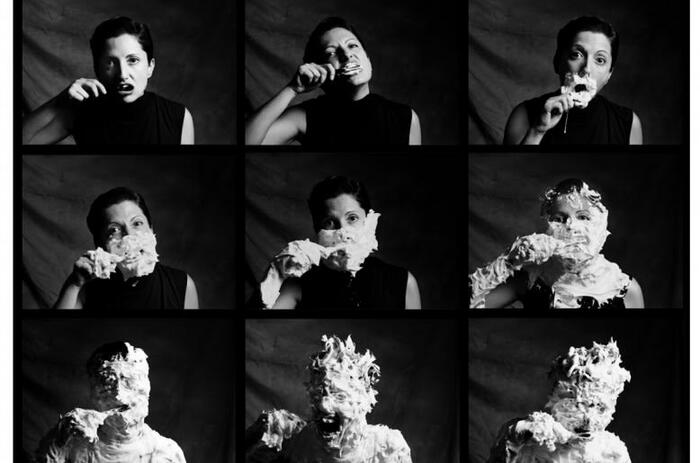
Gomide & Co announces the participation of Brazilian artist Leonora de Barros at the 59th International Art Exhibition of La Biennale di Venezia, curated by Cecilia Alemani and scheduled to open on April 23, 2022.
BIENNALE DI VENEZIA - LEONORA DE BARROS FOR BRAZIL
Gomide & Co announces the participation of Brazilian artist Leonora de Barros at the 59th International Art Exhibition of La Biennale di Venezia, curated by Cecilia Alemani and scheduled to open on April 23, 2022.

The exhibition will include “gender non-conforming artists who are challenging the figure of man as centre of the universe”. The artistic director of the 2022 Venice Biennale, Cecilia Alemani, outlined her curatorial plans for the 59th International Art Exhibition, which opens this spring (23 April-27 November). Alemani revealed that the show, The Milk of Dreams, will include 213 artists from 58 countries with more than 180 artists participating for the first time.
BIENNALE DI VENEZIA – THE MILK OF DREAMS, BY CECILIA ALEMANI
The exhibition will include “gender non-conforming artists who are challenging the figure of man as centre of the universe”. The artistic director of the 2022 Venice Biennale, Cecilia Alemani, outlined her curatorial plans for the 59th International Art Exhibition, which opens this spring (23 April-27 November). Alemani revealed that the show, The Milk of Dreams, will include 213 artists from 58 countries with more than 180 artists participating for the first time.
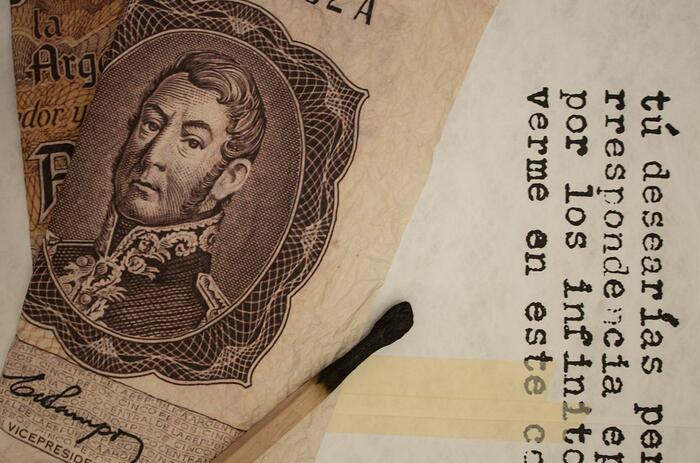
On February 16th, the exhibition "Una colección, dos cartas y un meteoro" (A Collection, Two Letters and a Meteor) was inaugurated at the Museo Nacional de Bellas Artes (Buenos Aires) with the work of artist Cristian Segura and curatorship by art historian María Guadalupe Suasnábar. The exhibition revalues the sculpture Météore (1981) by Alicia Penalba (San Pedro, 1913-París, 1982) through an installation by Segura (Tandil, 1976) about the letters exchanged between Penalba and those responsible for the Torcuato Di Tella Institute between 1961 and 1962.
"A COLLECTION, TWO LETTERS AND A METEOR" AT THE NATIONAL MUSEUM OF FINE ARTS
On February 16th, the exhibition "Una colección, dos cartas y un meteoro" (A Collection, Two Letters and a Meteor) was inaugurated at the Museo Nacional de Bellas Artes (Buenos Aires) with the work of artist Cristian Segura and curatorship by art historian María Guadalupe Suasnábar. The exhibition revalues the sculpture Météore (1981) by Alicia Penalba (San Pedro, 1913-París, 1982) through an installation by Segura (Tandil, 1976) about the letters exchanged between Penalba and those responsible for the Torcuato Di Tella Institute between 1961 and 1962.
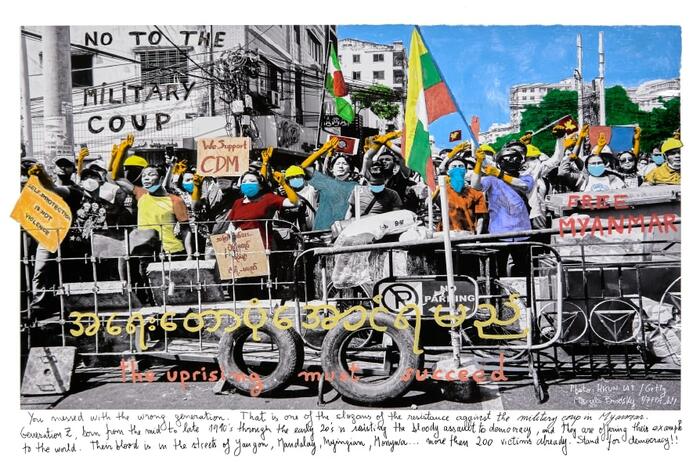
Organized by Human Rights Art Initiative and art+château, this photographic exhibition in Zurich features artist and human rights activist Marcelo Brodsky (b. 1954, Buenos Aires, Argentina) along with video works and a performance by Ko Latt, Yadanar Win, Lily and Zoncy, who represent the new generation of Burmese artists and whose work reveal elements of Myanmar’s social, political, and cultural narrative. Curated by Giulia Busetti and Dr. Valentina Locatelli.
MARCELO BRODSKY EXHIBITS “STAND FOR DEMOCRACY: MYANMAR”
Organized by Human Rights Art Initiative and art+château, this photographic exhibition in Zurich features artist and human rights activist Marcelo Brodsky (b. 1954, Buenos Aires, Argentina) along with video works and a performance by Ko Latt, Yadanar Win, Lily and Zoncy, who represent the new generation of Burmese artists and whose work reveal elements of Myanmar’s social, political, and cultural narrative. Curated by Giulia Busetti and Dr. Valentina Locatelli.

The MACA (Atchugarry Museum of Contemporary Art) hosts until mid-April the great exhibition entitled Gráfica Encapsulada (Encapsulated Graphics) by the Argentine artist León Ferrari. The show features a series of works dating back to the 1980s.
THE MACA IN MANANTIALES EXHIBITS LEÓN FERRARI: ENCAPSULATED GRAPHICS
The MACA (Atchugarry Museum of Contemporary Art) hosts until mid-April the great exhibition entitled Gráfica Encapsulada (Encapsulated Graphics) by the Argentine artist León Ferrari. The show features a series of works dating back to the 1980s.

Guadalupe Maravilla: Luz y Fuerza exhibits sculptures and other pieces by the Salvadoran artist while also hosting Healing Sound Baths for the public. “I create new mythologies that take the form of real and fictionalized rituals based on my own lived experiences,” says Guadalupe Maravilla.
GUADALUPE MARAVILLA EXHIBITS IN MoMA AND OFFERS HEALING SESSIONS
Guadalupe Maravilla: Luz y Fuerza exhibits sculptures and other pieces by the Salvadoran artist while also hosting Healing Sound Baths for the public. “I create new mythologies that take the form of real and fictionalized rituals based on my own lived experiences,” says Guadalupe Maravilla.

Gomide & Co announces the participation of Brazilian artist Leonora de Barros at the 59th International Art Exhibition of La Biennale di Venezia, curated by Cecilia Alemani and scheduled to open on April 23, 2022.
BIENNALE DI VENEZIA - LEONORA DE BARROS FOR BRAZIL
Gomide & Co announces the participation of Brazilian artist Leonora de Barros at the 59th International Art Exhibition of La Biennale di Venezia, curated by Cecilia Alemani and scheduled to open on April 23, 2022.

The exhibition will include “gender non-conforming artists who are challenging the figure of man as centre of the universe”. The artistic director of the 2022 Venice Biennale, Cecilia Alemani, outlined her curatorial plans for the 59th International Art Exhibition, which opens this spring (23 April-27 November). Alemani revealed that the show, The Milk of Dreams, will include 213 artists from 58 countries with more than 180 artists participating for the first time.
BIENNALE DI VENEZIA – THE MILK OF DREAMS, BY CECILIA ALEMANI
The exhibition will include “gender non-conforming artists who are challenging the figure of man as centre of the universe”. The artistic director of the 2022 Venice Biennale, Cecilia Alemani, outlined her curatorial plans for the 59th International Art Exhibition, which opens this spring (23 April-27 November). Alemani revealed that the show, The Milk of Dreams, will include 213 artists from 58 countries with more than 180 artists participating for the first time.

On February 16th, the exhibition "Una colección, dos cartas y un meteoro" (A Collection, Two Letters and a Meteor) was inaugurated at the Museo Nacional de Bellas Artes (Buenos Aires) with the work of artist Cristian Segura and curatorship by art historian María Guadalupe Suasnábar. The exhibition revalues the sculpture Météore (1981) by Alicia Penalba (San Pedro, 1913-París, 1982) through an installation by Segura (Tandil, 1976) about the letters exchanged between Penalba and those responsible for the Torcuato Di Tella Institute between 1961 and 1962.
"A COLLECTION, TWO LETTERS AND A METEOR" AT THE NATIONAL MUSEUM OF FINE ARTS
On February 16th, the exhibition "Una colección, dos cartas y un meteoro" (A Collection, Two Letters and a Meteor) was inaugurated at the Museo Nacional de Bellas Artes (Buenos Aires) with the work of artist Cristian Segura and curatorship by art historian María Guadalupe Suasnábar. The exhibition revalues the sculpture Météore (1981) by Alicia Penalba (San Pedro, 1913-París, 1982) through an installation by Segura (Tandil, 1976) about the letters exchanged between Penalba and those responsible for the Torcuato Di Tella Institute between 1961 and 1962.

Organized by Human Rights Art Initiative and art+château, this photographic exhibition in Zurich features artist and human rights activist Marcelo Brodsky (b. 1954, Buenos Aires, Argentina) along with video works and a performance by Ko Latt, Yadanar Win, Lily and Zoncy, who represent the new generation of Burmese artists and whose work reveal elements of Myanmar’s social, political, and cultural narrative. Curated by Giulia Busetti and Dr. Valentina Locatelli.
MARCELO BRODSKY EXHIBITS “STAND FOR DEMOCRACY: MYANMAR”
Organized by Human Rights Art Initiative and art+château, this photographic exhibition in Zurich features artist and human rights activist Marcelo Brodsky (b. 1954, Buenos Aires, Argentina) along with video works and a performance by Ko Latt, Yadanar Win, Lily and Zoncy, who represent the new generation of Burmese artists and whose work reveal elements of Myanmar’s social, political, and cultural narrative. Curated by Giulia Busetti and Dr. Valentina Locatelli.

The MACA (Atchugarry Museum of Contemporary Art) hosts until mid-April the great exhibition entitled Gráfica Encapsulada (Encapsulated Graphics) by the Argentine artist León Ferrari. The show features a series of works dating back to the 1980s.
THE MACA IN MANANTIALES EXHIBITS LEÓN FERRARI: ENCAPSULATED GRAPHICS
The MACA (Atchugarry Museum of Contemporary Art) hosts until mid-April the great exhibition entitled Gráfica Encapsulada (Encapsulated Graphics) by the Argentine artist León Ferrari. The show features a series of works dating back to the 1980s.

Guadalupe Maravilla: Luz y Fuerza exhibits sculptures and other pieces by the Salvadoran artist while also hosting Healing Sound Baths for the public. “I create new mythologies that take the form of real and fictionalized rituals based on my own lived experiences,” says Guadalupe Maravilla.
GUADALUPE MARAVILLA EXHIBITS IN MoMA AND OFFERS HEALING SESSIONS
Guadalupe Maravilla: Luz y Fuerza exhibits sculptures and other pieces by the Salvadoran artist while also hosting Healing Sound Baths for the public. “I create new mythologies that take the form of real and fictionalized rituals based on my own lived experiences,” says Guadalupe Maravilla.

Gomide & Co announces the participation of Brazilian artist Leonora de Barros at the 59th International Art Exhibition of La Biennale di Venezia, curated by Cecilia Alemani and scheduled to open on April 23, 2022.
BIENNALE DI VENEZIA - LEONORA DE BARROS FOR BRAZIL
Gomide & Co announces the participation of Brazilian artist Leonora de Barros at the 59th International Art Exhibition of La Biennale di Venezia, curated by Cecilia Alemani and scheduled to open on April 23, 2022.

The exhibition will include “gender non-conforming artists who are challenging the figure of man as centre of the universe”. The artistic director of the 2022 Venice Biennale, Cecilia Alemani, outlined her curatorial plans for the 59th International Art Exhibition, which opens this spring (23 April-27 November). Alemani revealed that the show, The Milk of Dreams, will include 213 artists from 58 countries with more than 180 artists participating for the first time.
BIENNALE DI VENEZIA – THE MILK OF DREAMS, BY CECILIA ALEMANI
The exhibition will include “gender non-conforming artists who are challenging the figure of man as centre of the universe”. The artistic director of the 2022 Venice Biennale, Cecilia Alemani, outlined her curatorial plans for the 59th International Art Exhibition, which opens this spring (23 April-27 November). Alemani revealed that the show, The Milk of Dreams, will include 213 artists from 58 countries with more than 180 artists participating for the first time.

On February 16th, the exhibition "Una colección, dos cartas y un meteoro" (A Collection, Two Letters and a Meteor) was inaugurated at the Museo Nacional de Bellas Artes (Buenos Aires) with the work of artist Cristian Segura and curatorship by art historian María Guadalupe Suasnábar. The exhibition revalues the sculpture Météore (1981) by Alicia Penalba (San Pedro, 1913-París, 1982) through an installation by Segura (Tandil, 1976) about the letters exchanged between Penalba and those responsible for the Torcuato Di Tella Institute between 1961 and 1962.
"A COLLECTION, TWO LETTERS AND A METEOR" AT THE NATIONAL MUSEUM OF FINE ARTS
On February 16th, the exhibition "Una colección, dos cartas y un meteoro" (A Collection, Two Letters and a Meteor) was inaugurated at the Museo Nacional de Bellas Artes (Buenos Aires) with the work of artist Cristian Segura and curatorship by art historian María Guadalupe Suasnábar. The exhibition revalues the sculpture Météore (1981) by Alicia Penalba (San Pedro, 1913-París, 1982) through an installation by Segura (Tandil, 1976) about the letters exchanged between Penalba and those responsible for the Torcuato Di Tella Institute between 1961 and 1962.

Organized by Human Rights Art Initiative and art+château, this photographic exhibition in Zurich features artist and human rights activist Marcelo Brodsky (b. 1954, Buenos Aires, Argentina) along with video works and a performance by Ko Latt, Yadanar Win, Lily and Zoncy, who represent the new generation of Burmese artists and whose work reveal elements of Myanmar’s social, political, and cultural narrative. Curated by Giulia Busetti and Dr. Valentina Locatelli.
MARCELO BRODSKY EXHIBITS “STAND FOR DEMOCRACY: MYANMAR”
Organized by Human Rights Art Initiative and art+château, this photographic exhibition in Zurich features artist and human rights activist Marcelo Brodsky (b. 1954, Buenos Aires, Argentina) along with video works and a performance by Ko Latt, Yadanar Win, Lily and Zoncy, who represent the new generation of Burmese artists and whose work reveal elements of Myanmar’s social, political, and cultural narrative. Curated by Giulia Busetti and Dr. Valentina Locatelli.

The MACA (Atchugarry Museum of Contemporary Art) hosts until mid-April the great exhibition entitled Gráfica Encapsulada (Encapsulated Graphics) by the Argentine artist León Ferrari. The show features a series of works dating back to the 1980s.
THE MACA IN MANANTIALES EXHIBITS LEÓN FERRARI: ENCAPSULATED GRAPHICS
The MACA (Atchugarry Museum of Contemporary Art) hosts until mid-April the great exhibition entitled Gráfica Encapsulada (Encapsulated Graphics) by the Argentine artist León Ferrari. The show features a series of works dating back to the 1980s.

Guadalupe Maravilla: Luz y Fuerza exhibits sculptures and other pieces by the Salvadoran artist while also hosting Healing Sound Baths for the public. “I create new mythologies that take the form of real and fictionalized rituals based on my own lived experiences,” says Guadalupe Maravilla.
GUADALUPE MARAVILLA EXHIBITS IN MoMA AND OFFERS HEALING SESSIONS
Guadalupe Maravilla: Luz y Fuerza exhibits sculptures and other pieces by the Salvadoran artist while also hosting Healing Sound Baths for the public. “I create new mythologies that take the form of real and fictionalized rituals based on my own lived experiences,” says Guadalupe Maravilla.

Gomide & Co announces the participation of Brazilian artist Leonora de Barros at the 59th International Art Exhibition of La Biennale di Venezia, curated by Cecilia Alemani and scheduled to open on April 23, 2022.
BIENNALE DI VENEZIA - LEONORA DE BARROS FOR BRAZIL
Gomide & Co announces the participation of Brazilian artist Leonora de Barros at the 59th International Art Exhibition of La Biennale di Venezia, curated by Cecilia Alemani and scheduled to open on April 23, 2022.

The exhibition will include “gender non-conforming artists who are challenging the figure of man as centre of the universe”. The artistic director of the 2022 Venice Biennale, Cecilia Alemani, outlined her curatorial plans for the 59th International Art Exhibition, which opens this spring (23 April-27 November). Alemani revealed that the show, The Milk of Dreams, will include 213 artists from 58 countries with more than 180 artists participating for the first time.
BIENNALE DI VENEZIA – THE MILK OF DREAMS, BY CECILIA ALEMANI
The exhibition will include “gender non-conforming artists who are challenging the figure of man as centre of the universe”. The artistic director of the 2022 Venice Biennale, Cecilia Alemani, outlined her curatorial plans for the 59th International Art Exhibition, which opens this spring (23 April-27 November). Alemani revealed that the show, The Milk of Dreams, will include 213 artists from 58 countries with more than 180 artists participating for the first time.

On February 16th, the exhibition "Una colección, dos cartas y un meteoro" (A Collection, Two Letters and a Meteor) was inaugurated at the Museo Nacional de Bellas Artes (Buenos Aires) with the work of artist Cristian Segura and curatorship by art historian María Guadalupe Suasnábar. The exhibition revalues the sculpture Météore (1981) by Alicia Penalba (San Pedro, 1913-París, 1982) through an installation by Segura (Tandil, 1976) about the letters exchanged between Penalba and those responsible for the Torcuato Di Tella Institute between 1961 and 1962.
"A COLLECTION, TWO LETTERS AND A METEOR" AT THE NATIONAL MUSEUM OF FINE ARTS
On February 16th, the exhibition "Una colección, dos cartas y un meteoro" (A Collection, Two Letters and a Meteor) was inaugurated at the Museo Nacional de Bellas Artes (Buenos Aires) with the work of artist Cristian Segura and curatorship by art historian María Guadalupe Suasnábar. The exhibition revalues the sculpture Météore (1981) by Alicia Penalba (San Pedro, 1913-París, 1982) through an installation by Segura (Tandil, 1976) about the letters exchanged between Penalba and those responsible for the Torcuato Di Tella Institute between 1961 and 1962.

Organized by Human Rights Art Initiative and art+château, this photographic exhibition in Zurich features artist and human rights activist Marcelo Brodsky (b. 1954, Buenos Aires, Argentina) along with video works and a performance by Ko Latt, Yadanar Win, Lily and Zoncy, who represent the new generation of Burmese artists and whose work reveal elements of Myanmar’s social, political, and cultural narrative. Curated by Giulia Busetti and Dr. Valentina Locatelli.
MARCELO BRODSKY EXHIBITS “STAND FOR DEMOCRACY: MYANMAR”
Organized by Human Rights Art Initiative and art+château, this photographic exhibition in Zurich features artist and human rights activist Marcelo Brodsky (b. 1954, Buenos Aires, Argentina) along with video works and a performance by Ko Latt, Yadanar Win, Lily and Zoncy, who represent the new generation of Burmese artists and whose work reveal elements of Myanmar’s social, political, and cultural narrative. Curated by Giulia Busetti and Dr. Valentina Locatelli.

The MACA (Atchugarry Museum of Contemporary Art) hosts until mid-April the great exhibition entitled Gráfica Encapsulada (Encapsulated Graphics) by the Argentine artist León Ferrari. The show features a series of works dating back to the 1980s.
THE MACA IN MANANTIALES EXHIBITS LEÓN FERRARI: ENCAPSULATED GRAPHICS
The MACA (Atchugarry Museum of Contemporary Art) hosts until mid-April the great exhibition entitled Gráfica Encapsulada (Encapsulated Graphics) by the Argentine artist León Ferrari. The show features a series of works dating back to the 1980s.

Guadalupe Maravilla: Luz y Fuerza exhibits sculptures and other pieces by the Salvadoran artist while also hosting Healing Sound Baths for the public. “I create new mythologies that take the form of real and fictionalized rituals based on my own lived experiences,” says Guadalupe Maravilla.
GUADALUPE MARAVILLA EXHIBITS IN MoMA AND OFFERS HEALING SESSIONS
Guadalupe Maravilla: Luz y Fuerza exhibits sculptures and other pieces by the Salvadoran artist while also hosting Healing Sound Baths for the public. “I create new mythologies that take the form of real and fictionalized rituals based on my own lived experiences,” says Guadalupe Maravilla.

Gomide & Co announces the participation of Brazilian artist Leonora de Barros at the 59th International Art Exhibition of La Biennale di Venezia, curated by Cecilia Alemani and scheduled to open on April 23, 2022.
BIENNALE DI VENEZIA - LEONORA DE BARROS FOR BRAZIL
Gomide & Co announces the participation of Brazilian artist Leonora de Barros at the 59th International Art Exhibition of La Biennale di Venezia, curated by Cecilia Alemani and scheduled to open on April 23, 2022.

The exhibition will include “gender non-conforming artists who are challenging the figure of man as centre of the universe”. The artistic director of the 2022 Venice Biennale, Cecilia Alemani, outlined her curatorial plans for the 59th International Art Exhibition, which opens this spring (23 April-27 November). Alemani revealed that the show, The Milk of Dreams, will include 213 artists from 58 countries with more than 180 artists participating for the first time.
BIENNALE DI VENEZIA – THE MILK OF DREAMS, BY CECILIA ALEMANI
The exhibition will include “gender non-conforming artists who are challenging the figure of man as centre of the universe”. The artistic director of the 2022 Venice Biennale, Cecilia Alemani, outlined her curatorial plans for the 59th International Art Exhibition, which opens this spring (23 April-27 November). Alemani revealed that the show, The Milk of Dreams, will include 213 artists from 58 countries with more than 180 artists participating for the first time.

On February 16th, the exhibition "Una colección, dos cartas y un meteoro" (A Collection, Two Letters and a Meteor) was inaugurated at the Museo Nacional de Bellas Artes (Buenos Aires) with the work of artist Cristian Segura and curatorship by art historian María Guadalupe Suasnábar. The exhibition revalues the sculpture Météore (1981) by Alicia Penalba (San Pedro, 1913-París, 1982) through an installation by Segura (Tandil, 1976) about the letters exchanged between Penalba and those responsible for the Torcuato Di Tella Institute between 1961 and 1962.
"A COLLECTION, TWO LETTERS AND A METEOR" AT THE NATIONAL MUSEUM OF FINE ARTS
On February 16th, the exhibition "Una colección, dos cartas y un meteoro" (A Collection, Two Letters and a Meteor) was inaugurated at the Museo Nacional de Bellas Artes (Buenos Aires) with the work of artist Cristian Segura and curatorship by art historian María Guadalupe Suasnábar. The exhibition revalues the sculpture Météore (1981) by Alicia Penalba (San Pedro, 1913-París, 1982) through an installation by Segura (Tandil, 1976) about the letters exchanged between Penalba and those responsible for the Torcuato Di Tella Institute between 1961 and 1962.

Organized by Human Rights Art Initiative and art+château, this photographic exhibition in Zurich features artist and human rights activist Marcelo Brodsky (b. 1954, Buenos Aires, Argentina) along with video works and a performance by Ko Latt, Yadanar Win, Lily and Zoncy, who represent the new generation of Burmese artists and whose work reveal elements of Myanmar’s social, political, and cultural narrative. Curated by Giulia Busetti and Dr. Valentina Locatelli.
MARCELO BRODSKY EXHIBITS “STAND FOR DEMOCRACY: MYANMAR”
Organized by Human Rights Art Initiative and art+château, this photographic exhibition in Zurich features artist and human rights activist Marcelo Brodsky (b. 1954, Buenos Aires, Argentina) along with video works and a performance by Ko Latt, Yadanar Win, Lily and Zoncy, who represent the new generation of Burmese artists and whose work reveal elements of Myanmar’s social, political, and cultural narrative. Curated by Giulia Busetti and Dr. Valentina Locatelli.




